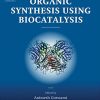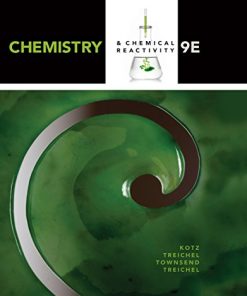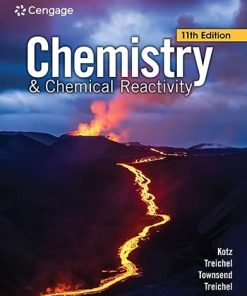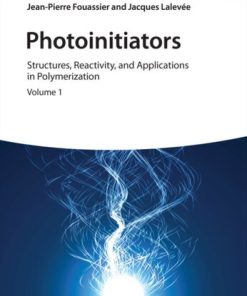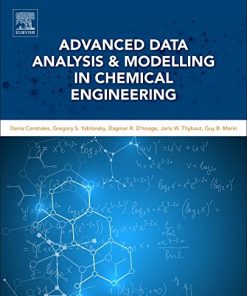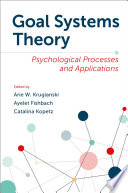Chemical Reactivity in Confined Systems Theory Modelling and Applications 1st edition by Pratim Kumar Chattaraj 1119683230 9781119683230
$50.00 Original price was: $50.00.$25.00Current price is: $25.00.
Chemical Reactivity in Confined Systems: Theory, Modelling and Applications 1st edition by Pratim Kumar Chattaraj – Ebook PDF Instant Download/DeliveryISBN: 1119683230, 9781119683230
Full download Chemical Reactivity in Confined Systems: Theory, Modelling and Applications 1st edition after payment.
Product details:
ISBN-10 : 1119683230
ISBN-13 : 9781119683230
Author: Pratim Kumar Chattaraj
An insightful analysis of confined chemical systems for theoretical and experimental scientists Chemical Reactivity in Confined Systems: Theory and Applications presents a theoretical basis for the molecular phenomena observed in confined spaces. The book highlights state-of-the-art theoretical and computational approaches, with a focus on obtaining physically relevant clarification of the subject to enable the reader to build an appreciation of underlying chemical principles. The book includes real-world examples of confined systems that highlight how the reactivity of atoms and molecules change upon encapsulation. Chapters include discussions on recent developments related to several host-guest systems, including cucurbit[n]uril, ExBox 4, clathrate hydrates, octa acid cavitand, metal organic frameworks (MOFs), covalent organic frameworks (COFs), zeolites, fullerenes, and carbon nanotubes. Readers will learn how to carry out new calculations to understand the physicochemical behavior of confined quantum systems. Topics covered include: A thorough introduction to global reactivity descriptors, including electronegativity, hardness, and electrophilicity An exploration of the Fukui function, as well as dual descriptors, higher order derivatives, and reactivity through information theory A practical discussion of spin dependent reactivity and temperature dependent reactivity Concise treatments of population analysis, reaction force, electron localization functions, and the solvent effect on reactivity Perfect for academic researchers and graduate students in theoretical and computational chemistry and confined chemical systems, Chemical Reactivity in Confined Systems: Theory and Applications will also earn a place in the libraries of professionals working in the areas of catalysis, supramolecular chemistry, and porous materials.
Chemical Reactivity in Confined Systems: Theory, Modelling and Applications 1st Table of contents:
1 Effect of Confinement on the Translation‐Rotation Motion of Molecules: The Inelastic Neutron Scattering Selection Rule
1.1 Introduction
1.2 Diatomics in : Entanglement, TR Coupling, Symmetry, Basis Representation, and Energy Level Structure
1.3 INS Selection Rule for Spherical (Kh) Symmetry
1.4 INS Selection Rules for Non‐Spherical Structures
1.5 Summary and Conclusions
Acknowledgments
References
Note
2 Pressure‐Induced Phase Transitions
2.1 Pressure, A Property of All Flavours, and Its Importance for the Universe and Life
2.2 Pressure: Isotropic and Anisotropic, Positive and Negative
2.3 Changes of the State of Matter
2.4 Compression of Solids
2.5 Structural Solid‐Solid Transitions
2.6 Selected Classes of Magnetic and Electronic Transitions
2.7 Modelling and Predicting HP Phase Transitions
Acknowledgements
References
Note
3 Conceptual DFT and Confinement
3.1 Introduction and Reading Guide
3.2 Conceptual DFT
3.3 Confinement and Conceptual DFT
3.4 Conclusions
Acknowledgements
References
Note
4 Electronic Structure of Systems Confined by Several Spatial Restrictions
4.1 Introduction
4.2 Confinement Imposed by Impenetrable Walls
4.3 Confinement Imposed by Soft Walls
4.4 Beyond Confinement Models
4.5 Conclusions
References
Note
5 Unveiling the Mysterious Mechanisms of Chemical Reactions
5.1 Introduction
5.2 Energy and Reaction Force
5.3 Electronic Activity Along a Reaction Coordinate
5.4 An Application: the Formation of Aminoacetonitrile
5.5 Conclusions
Acknowledgments
References
6 A Perspective on the So‐Called Dual Descriptor
6.1 Introduction: Conceptual DFT
6.2 The Dual Descriptor: Fundamental Aspects
6.3 Illustrations
6.4 Conclusions
References
Notes
7 Molecular Electrostatic Potentials: Significance and Applications
7.1 A Quick Review of Some Classical Physics
7.2 Molecular Electrostatic Potentials
7.3 The Electronic Density and the Electrostatic Potential
7.4 Characterization of Molecular Electrostatic Potentials
7.5 Molecular Reactivity
7.6 Some Applications of Electrostatic Potentials to Molecular Reactivity
7.7 Electrostatic Potentials at Nuclei
7.8 Discussion and Summary
References
8 Chemical Reactivity Within the Spin‐Polarized Framework of Density Functional Theory
8.1 Introduction
8.2 The Spin‐Polarized Density Functional Theory as a Suitable Framework to Describe Both Charge and Spin Transfer Processes
8.3 Practical Applications of SP‐DFT Indicators
8.4 Concluding Remarks and Perspectives
Acknowledgements
References
Notes
9 Chemical Binding and Reactivity Parameters: A Unified Coarse Grained Density Functional View
9.1 Introduction
9.2 Theory
9.3 Perspective on Model Building for Chemical Binding and Reactivity
9.4 Concluding Remarks
Acknowledgements
References
Note
10 Softness Kernel and Nonlinear Electronic Responses
10.1 Introduction
10.2 Linear and Nonlinear Electronic Responses
10.3 One‐Dimensional Confined Quantum Gas: Analytical Results from a Model Functional
10.4 Conclusion
References
11 Conceptual Density Functional Theory in the Grand Canonical Ensemble
11.1 Introduction
11.2 Fundamental Equations for Chemical Reactivity
11.3 Temperature‐Dependent Response Functions
11.4 Local Counterpart of a Global Descriptor and Non‐Local Counterpart of a Local Descriptor
11.5 Concluding Remarks
11.6 Acknowledgements
References
Note
12 Effect of Confinement on the Optical Response Properties of Molecules
12.1 Introduction
12.2 Electronic Contributions to Longitudinal Electric‐Dipole Properties of Atomic and Molecular Systems Embedded in Harmonic Oscillator Potential
12.3 Vibrational Contributions to Longitudinal Electric‐Dipole Properties of Spatially Confined Molecular Systems
12.4 Two‐Photon Absorption in Spatial Confinement
12.5 Conclusions
References
Note
13 A Density Functional Theory Study of Confined Noble Gas Dimers in Fullerene Molecules
13.1 Introduction
13.2 Computational Details
13.3 Results and Discussion
13.4 Conclusions
Acknowledgments
References
14 Confinement Induced Chemical Bonding: Case of Noble Gases
14.1 Introduction
14.2 Computational Details and Theoretical Background
14.3 The Bonding in He@C10H16: A Debate
14.4 Confinement Inducing Chemical Bond Between Two Ngs
14.5 XNgY Insertion Molecule: Confinement in One Direction
14.6 Conclusions
Acknowledgements
References
Note
15 Effect of Both Structural and Electronic Confinements on Interaction, Chemical Reactivity and Properties
15.1 Introduction
15.2 Geometrical Changes in Small Molecules Under Spherical and Cylindrical Confinement
15.3 Hydrogen Bonding Interaction of Small Molecules in the Spherical and Cylindrical Confinement
15.4 Spherical and Cylindrical Confinement and Chemical Reactivity
15.5 Concluding Remarks
References
16 Effect of Confinement on Gas Storage Potential and Catalytic Activity
16.1 Introduction
16.2 Endohedral Gas Adsorption Inside Clathrate Hydrates
16.3 Hydrogen Hydrates
16.4 Methane Hydrates
16.5 Noble Gas Hydrates
16.6 Confinement Induced Catalysis of Some Chemical Reactions
16.7 Outlook
Acknowledgements
References
Note
17 Engineering the Confined Space of MOFs for Heterogeneous Catalysis of Organic Transformations
17.1 Introduction
17.2 Catalysis at the Open Metal Sites
17.3 Functionalization in the MOF to Furnish Catalytic Site
17.4 MOFs as Bifunctional Catalyst
17.5 Impregnation/Encapsulation of Nanoparticles in the MOF Cavity for Catalysis
17.6 Engineering Homochiral MOFs for Enantioselective Catalysis
17.7 Conclusion
Acknowledgements
References
Notes
18 Controlling Excited State Chemistry of Organic Molecules in Water Through Incarceration
18.1 Introduction
18.2 Complexation Properties of OA
18.3 Properties of OA capsule
18.4 Dynamics of Encapsulated Guests
18.5 Dynamics of Host‐Guest Complex
18.6 Room Temperature Phosphorescence of Encapsulated Organic Molecules
18.7 Consequence of Confinement on the Photophysics of Anthracene
18.8 Selective Photo‐Oxidation of Cycloalkenes
18.9 Remote Activation of Encapsulated Guests: Electron Transfer Across an Organic Wall
18.10 Summary
Acknowledgements
References
Note
19 Effect of Confinement on the Physicochemical Properties of Chromophoric Dyes/Drugs with Cucurbit[n]uril: Prospective Applications
19.1 Introduction
19.2 Confinement in Cucurbituril Hosts: Effects on the Physicochemical Properties of Guest Molecules – Advantages for Various Technological Applications
19.3 Conclusion
Acknowledgement
References
Note
20 Box‐Shaped Hosts: Evaluation of the Interaction Nature and Host Characteristics of ExBox Derivatives in Host‐Guest Complexes from Computational Methods
20.1 Introduction
20.2 Noncovalent Interactions Through Energy Decomposition Analysis
20.3 Ex0Box4+ (CBPQT4+)
20.4 ExBox4+ and Ex2Box4+
20.5 Larger Boxes
20.6 NMR Features
20.7 All Carbon Counterpart
20.8 Conclusions
People also search for Chemical Reactivity in Confined Systems: Theory, Modelling and Applications 1st:
what is chemical reactivity
reactive chemicals list
chemical reactivity examples
air reactive chemicals list
chemical hazards in confined space
Tags: Chemical Reactivity, Confined Systems, Theory, Modelling, Applications, Pratim Kumar Chattaraj
You may also like…
Uncategorized
Chemistry - Chemistry - General & Miscellaneous
Engineering
Photoinitiators: Structures, Reactivity and Applications in Polymerization Jean-Pierre Fouassier
Computers - Applications & Software
Advanced Data Analysis & Modelling in Chemical Engineering 1st Edition Denis Constales



